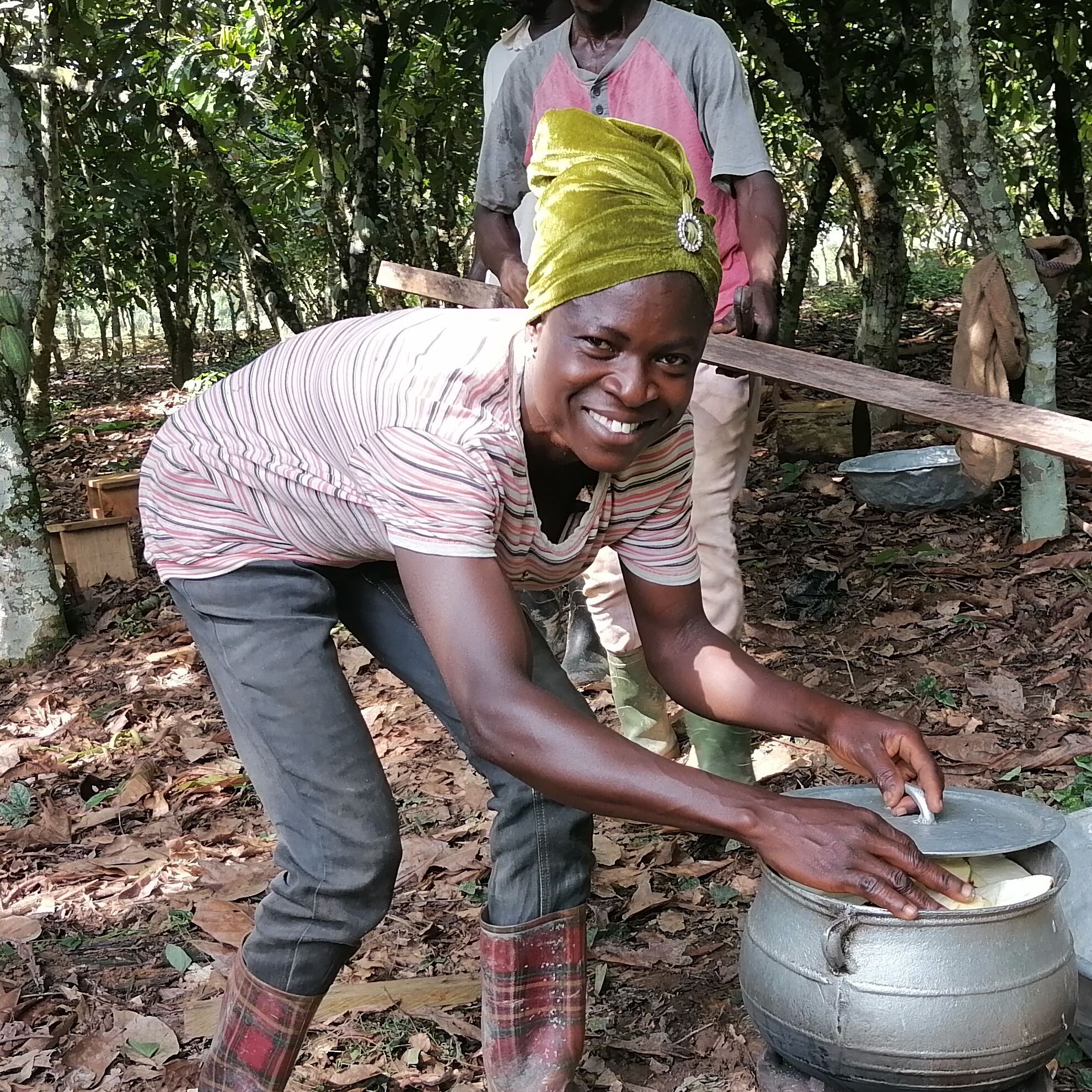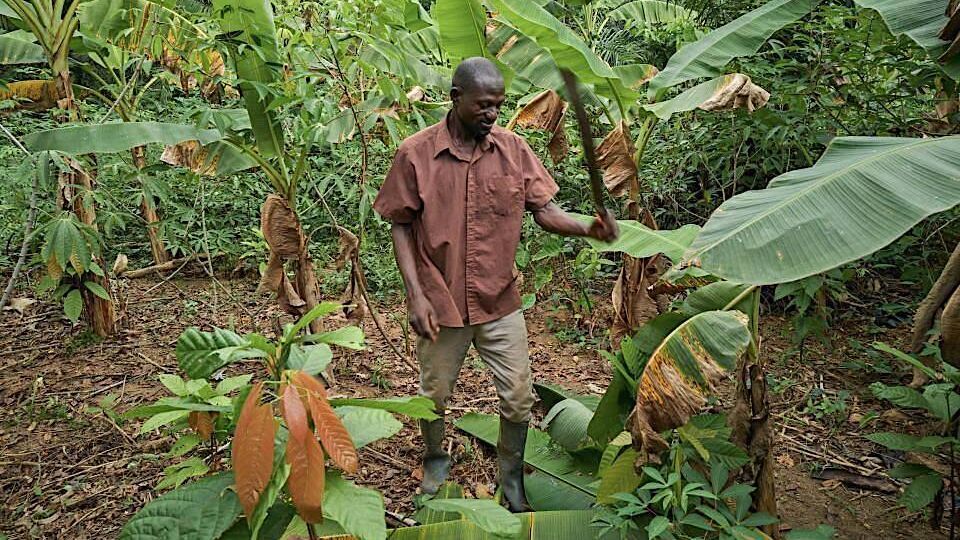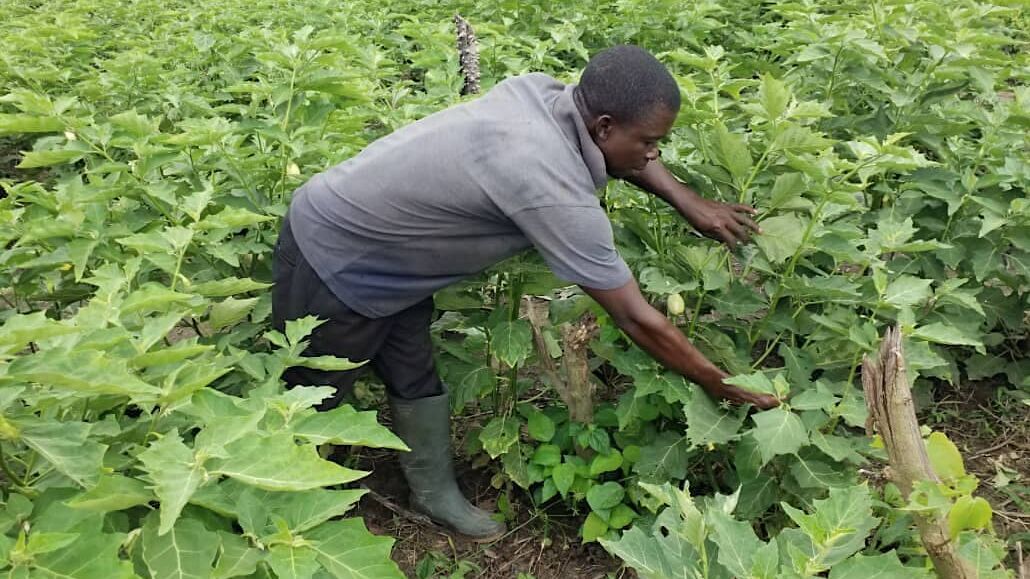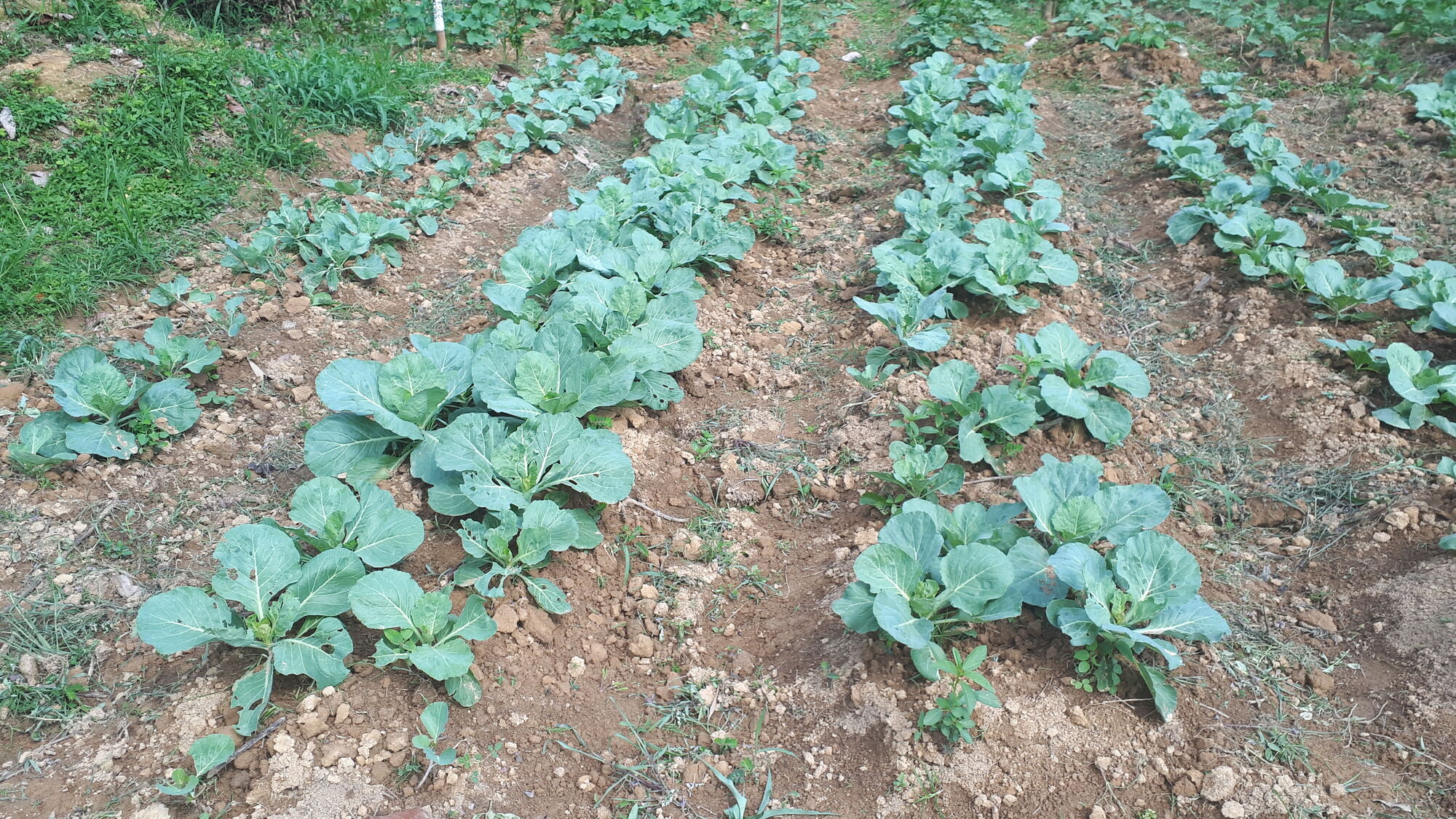"Akuafoo Nkoosoo” (“Farmers’ Success”)
What the project was about
Having over-aged cocoa trees with low yields and relying highly on few sources of income are among the biggest challenges for Ghanaian smallholder cocoa farmers. Therefore, the project aimed at improving livelihoods of 3’000 Ghanaian cocoa farming households via Farm Business Plans. It combined rejuvenation of cocoa plantations with small-scale vegetable production and use of climate-friendly cookstoves to improve farmers’ income, nutrition and health.
What was done
- Farming Business Plans were provided to more than 3’000 farmers.
- 900 ha of cocoa plantations were rejuvenated. In addition, a cocoa rejuvenation guide was developed in close collaboration with the Ghana Cocoa Board (COCOBOD).
- 130'823 plantain suckers were planted within the rejuvenated plots.
- Vegetable gardens were set up for households, organised through 190 Village Savings and Loan Associations (VSLA), where 41% of the participants were females.
- All households received improved cookstoves.
What the project achieved
The activities led to sustaining cocoa production and improved the climate resilience of the cocoa farming households. The farmer households further benefited from energy efficient cookstoves to help them cook smarter, thereby saving money, reducing firewood usage and reducing their carbon footprint.
These achievements were possible by starting with a small part of a cocoa plot to increase farmers’ acceptance while limiting their risk exposure. It demonstrated that the model can sustain cocoa production while newly planted crops and trees bring additional income. However, it was key to first prune old cocoa trees heavily to keep yields from old trees going and to allow enough sunlight for newly planted seedlings to establish.

The new stove helps me to cook on the farm for both my family and hired labourers. What I like about the stove is its lightweight which makes it easy to carry around and it produces less smoke.
What didn’t work or had unintended consequences
While farmers readily planted plantains and bananas, planting shade trees had a low acceptance. Moreover, the average volume of vegetables produced was 16 kg per farmer, which is only 6% of the original target. One reason for this was change in the intervention design: gardens were shared by members of VSLAs compared to having gardens managed by individual farmers. More fruit was then used for their own consumption and not sold on the market compared to the plan.
Meanwhile, VSLA members engaged in the vegetable farming reported that the activity positively contributed to the social cohesion within their group. VSLA members also showed interest in setting up a seeds bank so that they have planting material free of charge always available.
Another difficulty was to reach a more female audience. It proved to be particularly difficult for the underplanting activity, as cocoa farmers in the project are predominantly men. At the same time, female farmers are at a higher risk of indebtedness – taking a credit proved to be risky for them.
Interview with Barry Callebaut about the project
Fred Frimpong, in what ways were the project’s approaches new and innovative?
The goal of this project was to find a new approach to soften the income gap that results from cutting old cocoa trees. Instead, we promoted to gradually replace ageing, unproductive cocoa trees with new plantings. Additionally, systematically planting shade trees and bananas in rejuvenated cocoa farms created additional “pension” income and food source. The underplanting method was further complemented with other key measures such as vegetable farming and the introduction of cook stoves to foster the resilience of farmer households.
What has Barry Callebaut learned through the project?
We learned a lot about what is necessary to scale up an intervention: First, farmer’s available resources to invest in cocoa farms is one of the main prerequisites for scale up. Innovative financing instruments are therefore necessary to enable farmers take a leap of faith. Second, secure land and tree tenure plays a major role in farmers' willingness to invest in the future economic success of their farms. Collaboration with the government is necessary to reach some degree of scalability at a reasonable cost. And third, we believe the cocoa sector will need to engage in cross sectoral collaborations if income diversification remains one of the target impacts for the industry. We believe so because farmers report increased willingness to diversify their crops if off-take markets for their products are secure.
What do you recommend to other stakeholders implementing similar projects?
We highly suggest to engage beneficiaries in the activity design – only interventions which are tailored enough can be successful. Therefore, all activities must be adapted to the local social, economic and environmental context. Also, staff should use a practical approach, since behavioural change requires practical hands-on demonstrations during training and similar processes. Last but not least, we suggest to build on existing structures. In our case, we worked with local organisations such as Village Savings and Loan Associations (VSLAs) to support deployment of our activities.
What are the next steps? How is it ensured that the project has not only short-term, but long-term effects?
After the project phase co-financed by SECO, we continue our activities and aim at filling some gaps: First, we will focus on advocacy and engagement with the necessary stakeholders to enable farmers to formally register their cocoa lands. This has shown to be necessary, since tenant farmers are unwilling to make any substantial investments into their old farms as long as lands will revert to landowners when old trees are replaced. Second, we will continue to engage farmers and provide efficient cookstoves on a need basis. Since the cookstoves are mainly utilised by women, the idea going forward is to scale the intervention by engaging VSLAs to help facilitate financing and acquisition of cookstoves for additional households. And third, Barry Callebaut seeks to extend the vegetable farming component of the project to benefit 4’000 additional farmers in its supply chain. To succeed, it is necessary to provide a secured marketing avenue for farmers, since marketing is the main barrier to smallholder farmers in such endeavours.
Organisations involved






